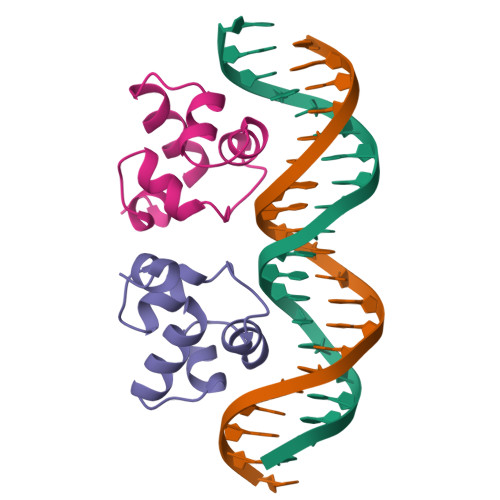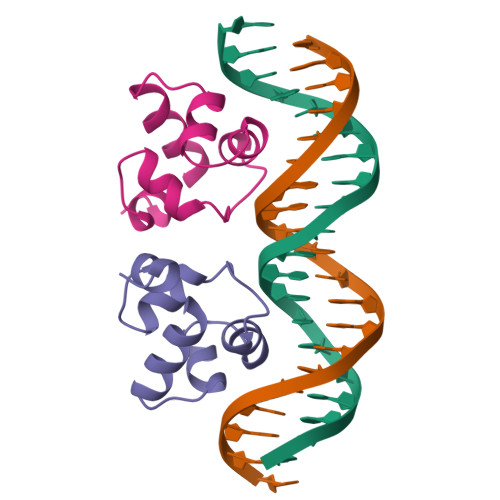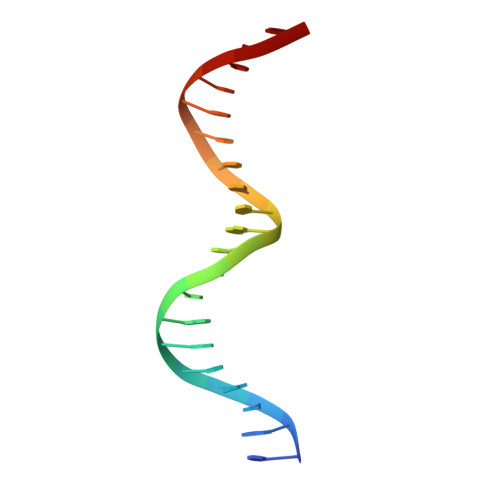The phage 434 OR2/R1-69 complex at 2.5 A resolution.
Shimon, L.J., Harrison, S.C.(1993) J Mol Biology 232: 826-838
- PubMed: 8355273
- DOI: https://doi.org/10.1006/jmbi.1993.1434
- Primary Citation of Related Structures:
1RPE - PubMed Abstract:
The crystal structure of the DNA-binding domain of bacteriophage 434 repressor (R1-69) in complex with a 20 base-pair DNA fragment has been determined to 2.5 A resolution. The DNA fragment contains the sequence of the OR2 operator site, which differs from the previously studied OR1 site at three of the variable six central base-pairs. Comparison of the two structures shows that the overall bent conformation of the DNA backbone as well as the pattern of DNA-protein interactions seen in the OR1/R1-69 complex are maintained in the OR2 complex. However, the conformations of the DNA base-pairs are different in the two structures. In particular, the central base-pairs of OR2/R1-69 structure are more co-planar than in OR1/R1-69, and there are no cross-strand "bifurcated" hydrogen bonds. These results show that binding of the protein causes operator DNA to adopt a particular, well-defined backbone conformation, and they reinforce the notion that the energetic cost of achieving this conformation, most likely different for different sequences, can determine, at least in part, the relative affinity of the repressor for different operator sites.
Organizational Affiliation:
Howard Hughes Medical Institute, Harvard University Department of Biochemistry and Molecular Biology, Cambridge, MA 02138.




















